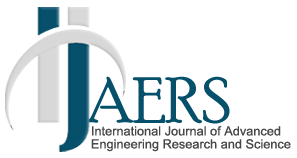Analyze Condensed Water Quality: A Case Study in a Public Building |
| ( Vol-9,Issue-4,April 2022 ) OPEN ACCESS |
| Author(s): |
Pauline De Albuquerque Gulde, Luiz Filipe Alves Cordeiro, Liliana Andrea Santos, Rafael Rodrigues da Silva |
| Keywords: |
|
Condensed water collection, Socio-environmental practices, Water resources, Pernambuco Court of Justice. |
| Abstract: |
|
The reuse of water from air conditioners has proved to be a valuable alternative to the water waste promoted by the excessive use of drinking water in activities that would not necessarily require clean water, such as washing external areas and windows. In this sense, the general objective of the present work is based on evaluating the thematic pertinence of the adequacy of the network implementation for the reuse of water from the dripping of the Forum Lourenço José Ribeiro (Fórum de Olinda) air conditioners, an organ that is part of the Tribunal of Justice of Pernambuco, located in the city of Olinda/PE. The case study is shown as a sufficient methodological apparatus to obtain results, which were evaluated through qualitative and quantitative techniques, intending to achieve a correct understanding of the cost savings with the implementation of drip water treatment of air conditioners in this building that is part of the Pernambuco Court of Justice. Results obtained indicate that the alkalinity of the water from the air condensers could not be used for human consumption, but it is suitable for use in non-noble purposes, such as washing the Forum patios. With this, the reuse of water resources resulting from the dripping of air conditioners is efficient to promote the yield of a natural asset that needs to be used within its maximum capacity, through the appropriate treatment that allows the reuse of the hydric matrix. |
| Article Info: |
|
Received: 19 Mar 2022, Received in revised form: 15 Apr 2022, Accepted: 23 Apr 2022, Available online: 30 Apr 2022 |
|
|
| Paper Statistics: |
| Cite this Article: |
| Click here to get all Styles of Citation using DOI of the article. |
- Track Your Paper
- editor.ijaers@gmail.com
- ISSN : 2349-6495(P) | 2456-1908(O)



Advanced Engineering Research and Science